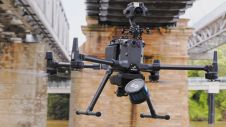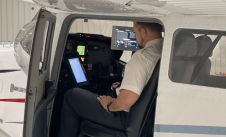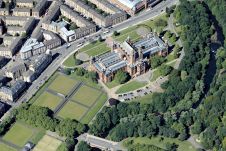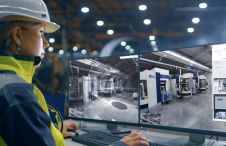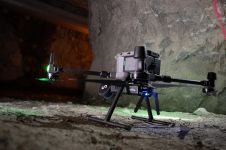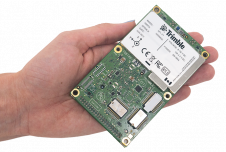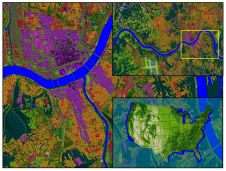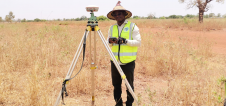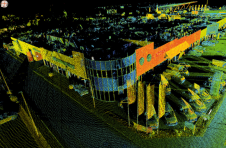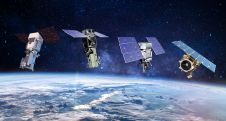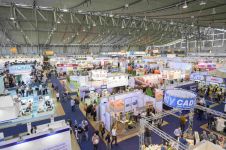Bosch Unveils Lidar Sensor for Autonomous Driving
Bosch has become the first company to develop a production-ready long-range Lidar sensor for automotive use. The Lidar system has been demonstrated at theConsumer Electronics Show(CES) taking place in Las Vegas, USA, this week. It complements the company’s existing radar and camera systems to provide the extra level of safety needed to make autonomous driving a reality.
According to Bosch, the laser-based distance measurement technology known as Lidar is indispensable for driving functions at SAE Levels 3 to 5. The new Bosch sensor covers both long and close ranges, making it suitable for use both on motorways and in city centres. By exploiting economies of scale, Bosch wants to reduce the price for the sophisticated technology and render it suitable for the mass market. “By filling the sensor gap, Bosch is making automated driving a viable possibility in the first place,” saysHarald Kröger, member of the Bosch management board.
Three sensor principles in parallel
Bosch developed the Lidar sensor after conducting its own extensive analysis and concluding that the parallel deployment of three sensor principles is essential to ensure that automated driving will offer maximum safety. Developers from Bosch investigated all use cases of automated driving functions – from highway assist to fully automated driving in cities. For example, if a motorcycle approaches an automated vehicle at high speed at a junction, Lidar is needed in addition to camera and radar to ensure the reliable sensing of the two-wheeler. In this instance, radar can struggle to detect the bike’s narrow silhouette and plastic fairings. Moreover, a camera can always be dazzled by harsh light falling on it. As a result, Bosch decided there is a need for radar, camera and Lidar to be combined in order to deliver reliable information in every driving situation.

Lidar is an essential element in automated driving
In Lidar systems, the sensor emits laser pulses and captures the laser light that is scattered back. The system then calculates distances based on the measured time it takes for the light to bounce back. Lidar offers very high resolution with a long range and a wide field of vision. As a result, the laser-based distance measurement tool can reliably detect even non-metallic objects at a great distance, such as rocks on the road. This means there is plenty of time to initiate driving manoeuvres such as braking or swerving. At the same time, using Lidar in vehicles exposes the Lidar system’s components, such as the detector and the laser, to many stresses – above all, with regard to temperature resistance and reliability over the vehicle’s entire lifetime. Thanks to its sensor expertise and systems know-how in the fields of radar and camera technology, Bosch has been able to develop the Lidar in such a way that all three sensor technologies dovetail with each other. “We want to make automated driving safe, convenient and fascinating. In this way, we will be making a decisive contribution to the mobility of the future,” adds Kröger.
Artificial intelligence is making assistance systems even safer
Bosch has been developing and manufacturing millions of ultrasound, radar and camera sensors in-house for many years now. The company is pushing forward innovation in sensor technology for driver assistance systems and automated driving, and paving the way for autonomous driving. Recently, Bosch engineers succeeded in taking the camera technology used in cars to a new level by enhancing it with artificial intelligence. After the camera has detected objects, they are categorized into classes such as vehicles, pedestrians or bicycles, and their movement is measured. In congested urban traffic, the camera can also recognize and classify partially obscured or crossing vehicles, pedestrians and cyclists quickly and reliably. This allows the vehicle to trigger a warning or an emergency braking manoeuvre as required. Bosch engineers are also continuously refining radar technology. The latest generation of Bosch radar sensors is even better at capturing the vehicle’s surroundings – including in bad weather or poor light conditions. Their greater detection range, wide aperture and high angular separability are the basis for this improved performance.
Additional safety comes from Bosch’s new interior monitoring system for vehicles. It detects when the driver is drowsy or looks at a smartphone based on eyelid movements, direction of gaze, and head position – and alerts the driver to critical situations. It also monitors the vehicle interior to determine how many occupants are present and where and in what position they are sitting. This makes it possible to optimize the operation of safety systems such as the airbags in an emergency. In the future, when vehicles are in partially automated driving mode for sections of the journey such as on the motorway, the driver monitoring system will become an indispensable partner. In these situations, the camera will ensure that the driver can safely take the wheel again at any time.
By 2022, the company will have spent around 4 billion euros on automated driving and will employ more than 5,000 engineers.

Make your inbox more interesting.Add some geo.
Keep abreast of news, developments and technological advancement in the geomatics industry.
Sign up for free

